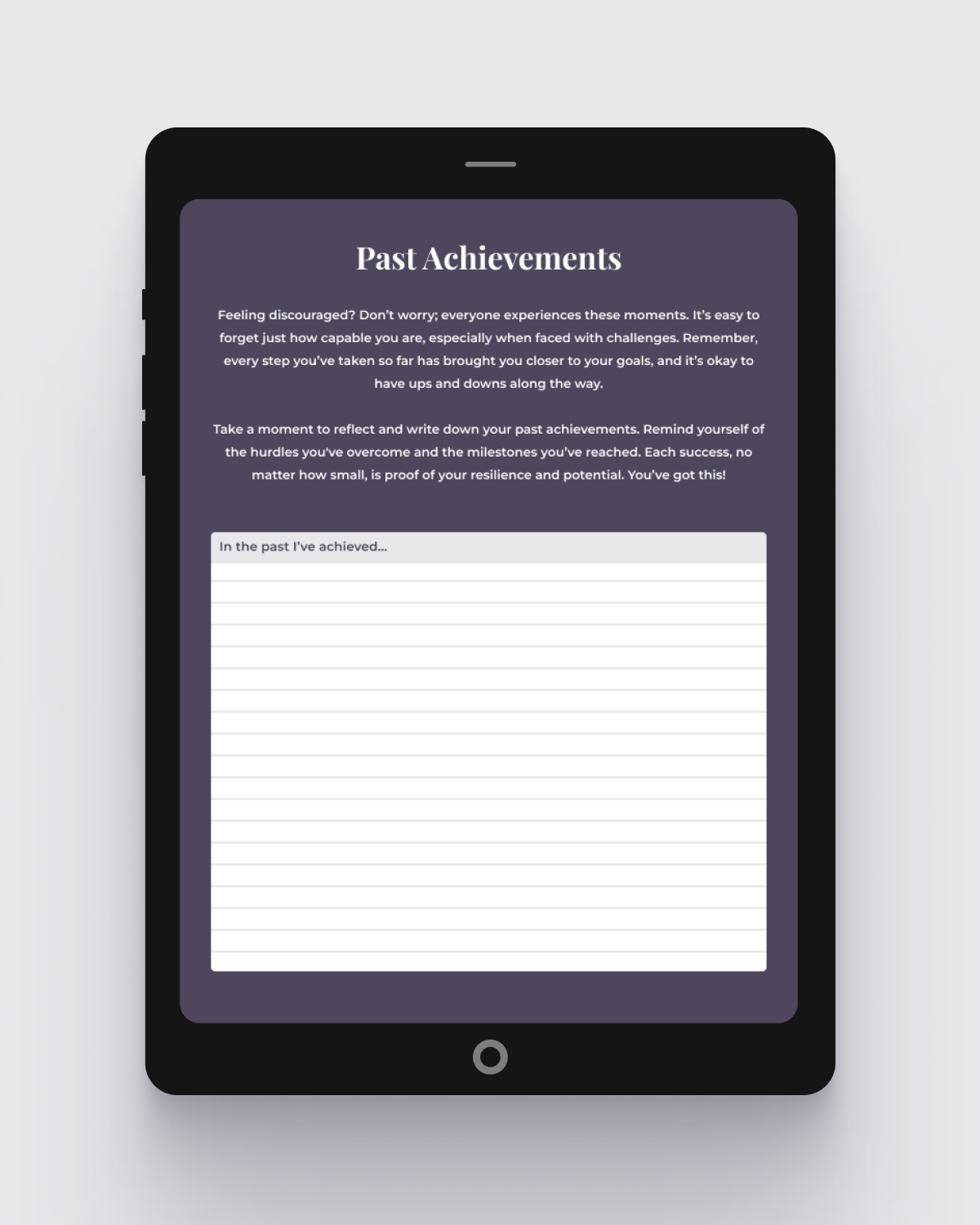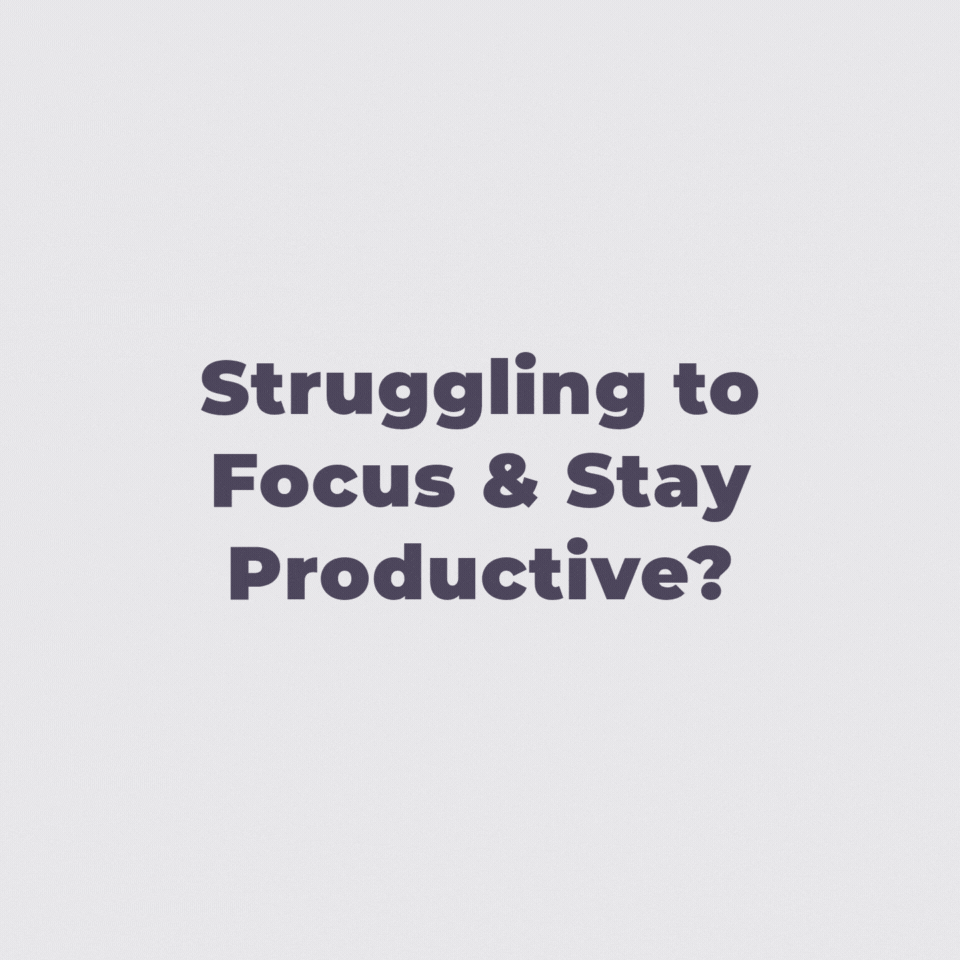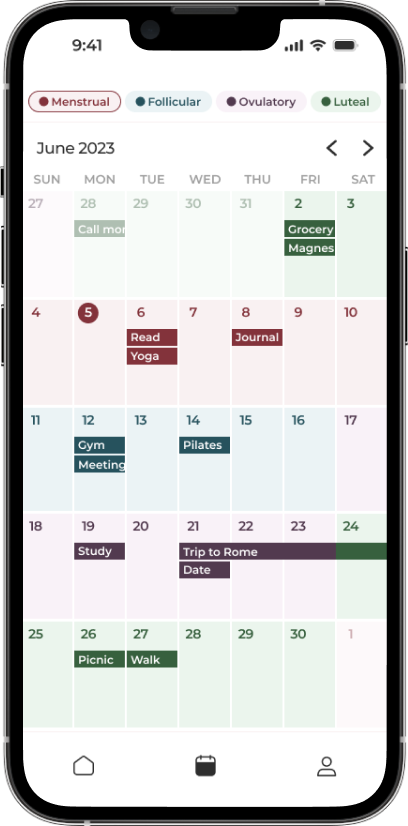The Complete Guide to Mood Trackers (I Tracked My Mood Daily for 2 Years)

In this blog post, I’ll cover everything you need to know about mood tracking, including answers to frequently asked questions such as: What is a mood tracker? What types of mood trackers are there? How can you effectively use one, and how often should you track your mood? I’ll also explore whether mood tracking can support those with mental health conditions, as well as the overall benefits and strategies for maximizing your mood tracking efforts. Alongside these insights, I’ll share my personal experience from two years of daily mood tracking—what I learned about myself, the tools I relied on, my detailed process, and how I combined data from different platforms to uncover patterns in my mental and physical well-being. Lastly, I’ll explain how I used these insights to set actionable goals and improve my daily life.
What Is a Mood Tracker?
A mood tracker is a tool used to monitor and record your daily emotions, feelings, and moods. It can help you identify patterns, triggers, and changes over time, making it easier to understand your mental health and emotional well-being.
What Are the Types of Mood Trackers?
There are several types of mood trackers, including:
- Paper Journals: Traditional notebooks where you can manually record your mood and reflections. If you enjoy writing and reflecting on your thoughts, a paper journal may be a great choice. This tactile option allows for creativity in your entries and can provide a calming ritual.
- Mobile Apps: Digital platforms that allow you to track your mood on the go. They often come with features like reminders, data visualization, and the ability to track additional aspects of your mental health, such as sleep or physical activity.
- Web-based Trackers: Online tools accessible from any device with an internet connection, often allowing for customizable entries.
- Mood Charts: Visual representations (like graphs or spreadsheets) that help you see trends and patterns over time. If you enjoy visual representation of your mood data, mood charts can help you see trends over time. They are particularly useful if you want to analyze patterns at a glance.
How to Use a Mood Tracker?
Mood trackers usually involve taking a moment at the end of each day to reflect and record how you felt overall. This can feel challenging because we experience a range of emotions throughout the day, from moments of happiness to stress, sadness, or contentment. However, it’s often enough to simply ask yourself, “Was today, on the whole, a good or bad day?” By capturing the general tone of your day, you can still gather valuable insights without getting overwhelmed by the smaller emotional shifts.
Many mood trackers offer flexibility in how you record your mood. You might use a numerical scale, such as 1 to 10, to represent how positive or negative your day felt, or opt for descriptive words like “happy,” “anxious,” or “neutral” to capture the essence of your experience. Some trackers go even further, allowing you to note specific events, thoughts, or interactions that influenced your mood. This extra layer of detail can help identify patterns and triggers over time, making it easier to understand what might be contributing to shifts in your emotional well-being.
How Often Should I Use a Mood Tracker?
For the best results, use your mood tracker daily. Consistent tracking allows you to capture fluctuations in your mood and identify patterns more accurately.
Can I Use a Mood Tracker If I Have a Mental Health Condition?
Yes! Mood trackers can be particularly beneficial for individuals with mental health conditions. They provide a structured way to monitor symptoms and emotional changes, which can help you and your healthcare provider develop effective coping strategies and treatment plans.
What Are the Benefits of Using a Mood Tracker?
Using a mood tracker can help you:
- Identify patterns in your emotions, such as recurring mood dips around certain times or during specific events.
- Recognize triggers that affect your mood, like hormonal cycles or work-related stressors, allowing you to anticipate and manage mood shifts more effectively.
- Monitor progress over time
- Increase self-awareness, helping you realize you may experience more positive days than you initially thought, offering a more balanced perspective on your emotional well-being.
- Support therapy and medication management by providing a log to discuss with mental health professionals, making it easier to spot trends and assess treatment effectiveness.
- Validate your feelings by documenting mood fluctuations over time, reinforcing that your emotional experiences are real and not “all in your head.”
- Create a grounding ritual, with many finding comfort in recording their daily mood, which can also inspire positive lifestyle choices like regular exercise that supports emotional health.
How Can I Make the Most of My Mood Tracker?
Consistency is the cornerstone of successful mood tracking. Making daily recordings over extended periods is essential, as this establishes reliable baseline data and helps identify meaningful patterns.
Equally crucial is the practice of parallel tracking—monitoring your mood alongside other life variables. This approach allows you to identify potential triggers and establish cause-and-effect relationships. Consider tracking variables such as:
Physical Factors:
- Sleep patterns (duration, quality, and schedule)
- Exercise routines and physical activity levels
- Dietary habits and meal timing
- Energy levels throughout the day
Emotional Components:
- Stress levels
- Anxiety indicators
- Anger triggers
- Overall emotional resilience
Behavioral Elements:
- Social interactions and relationships
- Leisure activities and hobbies
- Screen time and digital media consumption
- Mindfulness practices
Environmental Influences:
- Work-related stressors
- Home environment and living conditions
- Major life events or transitions
- The changing seasons or the weather
What I Learned After I Tracked My Mood Daily for 2 Years
For the past two years, I’ve used a combination of Daylio for mood tracking, Apple Watch for health metrics, and AI tools for analysis. I’ve gathered and analyzed an extensive dataset about my emotional and physical well-being.
Tools and Data Collection
The foundation of my tracking system centers on three primary tools. First, the Daylio app serves as my daily mood and anxiety tracker, allowing me to record emotional states consistently. Second, my Apple Watch continuously monitors my physical metrics, including step count, exercise minutes, and basic sleep patterns. Third, I use AutoSleep for more detailed sleep analysis.
To maximize the value of this data, I exported CSV files from all sources and integrated them into Google’s Notebook AI platform. This combination of data streams has enabled me to conduct an analysis and uncover deeper insights about my well-being patterns.
Primary Tools
- Daylio App: Daily mood and anxiety level tracking
- Apple Watch: Step count & exercise minutes
- AutoSleep: Detailed sleep metrics
- Google’s Notebook AI: An AI in which you can import all of your files and ask questions related to them.
Key Metrics and Findings
Using the Daylio app, I reviewed the exact number of days spent in each mood state and anxiety level (for example, 245 days marked as “good,” 50 as “neutral,” etc.). I then calculated my total tracked days and provided this data to ChatGPT to determine the percentage breakdown of each mood category.
This approach was especially helpful for setting measurable goals related to my happiness. By establishing clear metrics, I could track my progress year by year to see if the strategies I implemented were genuinely improving my emotional well-being.
Year by year alongside goals example:
| Mood Level | Year 2023 | Year 2024 | 2025 Goal |
|---|---|---|---|
| Very Good | 12% | 15% | 20% |
| Good | 67% | 69% | 70% |
| Neutral | 13% | 10% | 5% |
| Bad | 6% | 5% | 4% |
| Very Bad | 2% | 1% | 1% |
Interesting Correlations
One on hand, I did have some interesting new discoveries- but I also had a few intuitive suspicions that were confirmed with concrete data. This validation transformed vague feelings into actionable insights, shifting my approach to mental health into a more conscious effort.
- Mood + Anxiety: One of my most valuable discoveries was understanding my relationship between happiness and anxiety. The data confirmed what I had sensed: there was no correlation between my anxiety and mood. This meant I could have a great day with high anxiety, and vice versa.
- Mood + Sleep: Contrary to common wellness advice, my data revealed that sleep patterns had minimal impact on my mood. The occasional nights of poor sleep often preceded particularly exciting events such as travel.
- Mood + Exercise: Interestingly, my mood didn’t seem to be impacted by whether I was sedentary or active either. However, exercise did affect my anxiety. This discovery confirmed that my anxiety was often due to excess energy. Managing it through exercise became a key tool for me.
- So, What Does Affect My Mood?: Common triggers, like sleep and lack of exercise, didn’t seem to apply to me. So what did? Well, in my Daylio app I wrote a little note to give a reasoning to my bad mental state, which then after my Notebook AI analysis I found out was mostly due to my social interactions. If I was having a bad day, it was almost always related to the people I was with. This urged me to work on my relationships, communicate better, and give myself more space to be on my own.
Self-Improvement for High Achievers Group on Telegram
Get daily insights, support, and discussions to improve your leadership skills, mindset, work/life balance, time and energy management, as well as overcoming perfectionism, self-doubt, limiting beliefs, and more...
Join groupMy Mood Tracking Method
To use my mood tracking method, it is necessary to have an iPhone and Apple Watch, as well as the Daylio (Freemium) and Autosleep (One-time payment) apps. Of course, you don’t have to repeat the exact same process, in which case you can see this as a guide to create your own method with what you have available to you.
1. Download the Daylio App & the Autosleep App
Daylio app has a free version, which was enough for what I needed it for. Autosleep is paid but is a one-time fee of about 10$. I am not affiliated with these, just genuinely what I use.
2. Connect it to Apple Health
Make sure Daylio has access to your Apple Health information. In this case having an Apple Watch is important, especially if you want to to look for correlations between your exercise or heart health, for example.
3. Set an Intention
For me, it was to find out the best method to manage my anxiety, which is why I added this feature on my Daylio app. Do a brainstorm if you find this part difficult. Here are some questions you can ask yourself:
- Why do you want track your moods?
- What do you suspect affects your mood?
- Are there any bad habits you want to let go of?
- Are there other feelings you’re trying to manage other than happiness levels, such as stress, fear or anger?
- Do you experience any physical sensations that may affect your mood, like energy levels or chronic pain related to stress?
Whatever it is, make sure to record it every day alongside your moods on your Daylio app.
4. Set a Timeline Goal
I was mostly interested in doing a year by year comparison, but you can do shorter intervals such as month by month, or 100 days by 100 days. Here’s the difference:
- Long-term: This method gives you a broad, long-term view of your emotional trends. It’s ideal if you want to see overarching patterns, such as how your moods change across different seasons or during romantic relationships. It helps identify major lifestyle changes (e.g., a job switch, relationships) that impacted your well-being.
- Short-term: Shorter intervals are great for identifying specific trends and adjusting habits more quickly. Tracking monthly helps you correlate your mood with shorter-term factors like current stressors, mindfulness practices, sleep patterns, or food and vitamin intake.
Once you choose one, make sure to stick to it. Write it down somewhere so you don’t forget it. I used the Goodnotes app on my iPad.
5. Export Data
Daylio will show you some stats, but if you want to go more in depth like I did, export your data and import it to Google’s Notebook AI.
Notebook AI currently only reads PDF files. If they’re given to you in another format, search for a converter online.
6. Data Analysis
Import all of your files to Google’s Notebook AI, and see what it says. Ask it anything you’ve been wondering. If you’re stuck, it will also suggest relevant questions to ask it.
7. Set Concrete Goals
Now that you have all the information, set concrete goals for yourself to work on the issues you’ve found. Set up a comparison timeline to view your progress. Have fun with it, make a mood board, create a spreadsheet, whatever makes sense to you.

Check out the Vision to Action Digital Planner PDF for only 5$
More infoLife Coaching Alongisde Mood Tracking
As a life coach, I can help you take your mood tracking to the next level by offering personalized support and guidance. While mood trackers are powerful tools on their own, having a coach by your side can make the process even more effective and insightful.
- Customized Analysis: I will help you interpret the patterns and trends in your mood tracker. Together, we can dig deeper into how your moods are influenced by various aspects of your life, such as stress, relationships, and routines.
- Actionable Strategies: Based on your mood data, I will guide you in setting practical, personalized goals to improve your emotional well-being. Whether it’s adjusting your habits, creating better coping mechanisms, or shifting perspectives, we’ll create a plan tailored to your needs.
- Accountability: Staying consistent with mood tracking can be challenging, but having someone to check in with makes a big difference. I’ll be there to encourage you, keep you on track, and help you stay committed to understanding and improving your moods.
- Emotional Support: Sometimes tracking your moods can reveal unexpected emotions or patterns that are difficult to face. I’ll provide a safe space for you to explore these feelings and work through them in a way that supports your growth.
- Deeper Self-Reflection: Beyond the data, we’ll work together to explore what your moods really mean. I’ll help you connect the dots between your emotional state and your deeper desires, challenges, and goals, turning your insights into positive, lasting change.
With my guidance, mood tracking can go beyond just collecting data—it becomes a tool for meaningful self-awareness and personal transformation.
Quiz: What Is Blocking Your Success?
This quick quiz will help you figure out which mental or behavioral pattern might be holding you back from achieving your full potential. Identifying your specific success blocker is the first step toward breaking through to new levels of achievement and fulfillment.
Read each question and choose the answer that feels most true to your situation.
No email or payment is required to complete the quiz and receive your personalized insights.
Once you have your primary success blocker, you have clarity about what’s been holding you back. This awareness is powerful—many people spend years struggling without understanding the specific pattern that’s limiting their progress.
Remember, these patterns aren’t permanent character traits but rather habitual ways of thinking and behaving that can be changed with the right guidance and practice.
If you’re ready to break through your specific blocker and achieve the success you know you’re capable of, send me an email to try out a coaching session. Your breakthrough awaits!
Hire me as your life coach
Let's startRecent posts
-
How to Create Your Morning Routine (+ Routines from Wellness Experts)
Read blog -
What Is the Root of Procrastination?
Read blog -
What Are Career Goals? (With Examples)
Read blog -
How To Start Decluttering When Overwhelmed?
Read blog -
10 Use Cases for Notebook LLM for Personal Growth
Read blog -
Can ChatGPT Help Me Find Out What I Really Want in Life?
Read blog

The App Made To Sync Your Lifestyle to Your Menstrual Cycle.
A solution for women who are looking to keep track of what they sync to their cycles, such as fitness, diet, etc. by adding it to a calendar that also predict their phases.
Learn more





Comment